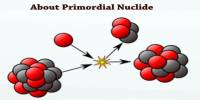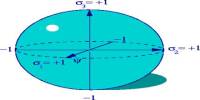Commercially accessible flat-screen TVs now include quantum dots, but it has been more challenging to produce arrays of their elongated siblings, quantum rods, for commercial electronics. Quantum rods to produce 3D visuals for virtual reality devices can control both the polarization and hue of light.
MIT engineers have developed a new method to precisely manufacture arrays of quantum rods using scaffolding made of folded DNA. The scientists can control the orientation of the quantum rods, which is a crucial aspect in regulating the polarization of the light generated by the array, by precisely depositing them onto a DNA scaffold. This makes it easier to add depth and dimensionality to a virtual scene.
“One of the challenges with quantum rods is: How do you align them all at the nanoscale so they’re all pointing in the same direction?” says Mark Bathe, an MIT professor of biological engineering and the senior author of the new study. “When they’re all pointing in the same direction on a 2D surface, then they all have the same properties of how they interact with light and control its polarization.”
MIT postdocs Chi Chen and Xin Luo are the lead authors of the paper, which appeared in Science Advances. Robert Macfarlane, an associate professor of materials science and engineering; Alexander Kaplan Ph.D. and Moungi Bawendi, the Lester Wolfe Professor of Chemistry, are also authors of the study.
Nanoscale structures
Bathe and others have taken the lead in designing and creating DNA origami, or nanoscale structures comprised of DNA, over the past 15 years. Highly stable and programmable molecules like DNA make excellent building blocks for microscopic structures that have a range of potential uses, such as delivering medications, serving as biosensors, or creating scaffolding for materials that harvest light.
Bathe’s research group has created computational techniques that let users enter a desired nanoscale shape they want to make, and a program will determine the DNA sequences that would naturally self-assemble into that shape. They also developed scalable fabrication methods that incorporate quantum dots into these DNA-based materials.
The method that we describe in this paper is great because it provides good spatial and orientational control of how the quantum rods are positioned. The next steps are going to be making arrays that are more hierarchical, with programmed structure at many different length scales. The ability to control the sizes, shapes, and placement of these quantum rod arrays is a gateway to all sorts of different electronics applications.
Professor Robert Macfarlane
In a 2022 paper, Bathe and Chen showed that they could use DNA to scaffold quantum dots in precise positions using scalable biological fabrication. On the basis of that work, they collaborated with Macfarlane’s group to take on the more challenging task of organizing quantum rods into 2D arrays, which is more difficult because the rods must all be aligned in the same direction.
Only a few methods that sweep the rods into one direction mechanically with a fabric or with an electric field have been successful in aligning arrays of quantum rods. This is due to the requirement for high-efficiency light-emission that the rods be kept at least 10 nanometers apart from one another in order to prevent “quenching,” or suppressing, the light-emitting activity of their neighbors.
To do that, the researchers came up with a method of fastening quantum rods to DNA origami structures in the form of diamonds, which can be constructed at the proper scale to maintain that spacing. These DNA structures are then attached to a surface, where they fit together like puzzle pieces.
“The quantum rods sit on the origami in the same direction, so now you have patterned all these quantum rods through self-assembly on 2D surfaces, and you can do that over the micron scale needed for different applications like microLEDs,” Bathe says. “You can orient them in specific directions that are controllable and keep them well-separated because the origamis are packed and naturally fit together, as puzzle pieces would.”
Assembling the puzzle
As the first step in getting this approach to work, the researchers had to come up with a way to attach DNA strands to the quantum rods. In order to achieve this, Chen created a method that involves emulsifying DNA with the quantum rods, followed by a quick dehydration step that enables the DNA molecules to form a thick layer on the surface of the rods.
This procedure is substantially quicker than any other method now in use for binding DNA to nanoscale particles, which may be crucial for enabling commercial applications.
“The unique aspect of this method lies in its near-universal applicability to any water-loving ligand with affinity to the nanoparticle surface, allowing them to be instantly pushed onto the surface of the nanoscale particles. By harnessing this method, we achieved a significant reduction in manufacturing time from several days to just a few minutes,” Chen says.
These DNA strands then act like Velcro, helping the quantum rods stick to a DNA origami template, which forms a thin film that coats a silicate surface. This thin film of DNA is first formed via self-assembly by joining neighboring DNA templates together via overhanging strands of DNA along their edges.
In order to expand their idea to device-scale arrangements of quantum rods for multiple applications, beyond just microLEDs or augmented reality/virtual reality, the researchers are now aiming to produce wafer-size surfaces with etched patterns.
“The method that we describe in this paper is great because it provides good spatial and orientational control of how the quantum rods are positioned. The next steps are going to be making arrays that are more hierarchical, with programmed structure at many different length scales. The ability to control the sizes, shapes, and placement of these quantum rod arrays is a gateway to all sorts of different electronics applications,” Macfarlane says.
“DNA is particularly attractive as a manufacturing material because it can be biologically produced, which is both scalable and sustainable, in line with the emerging U.S. bioeconomy. Translating this work towards commercial devices by solving several remaining bottlenecks, including switching to environmentally safe quantum rods, is what we’re focused on next,” Bathe adds.
















